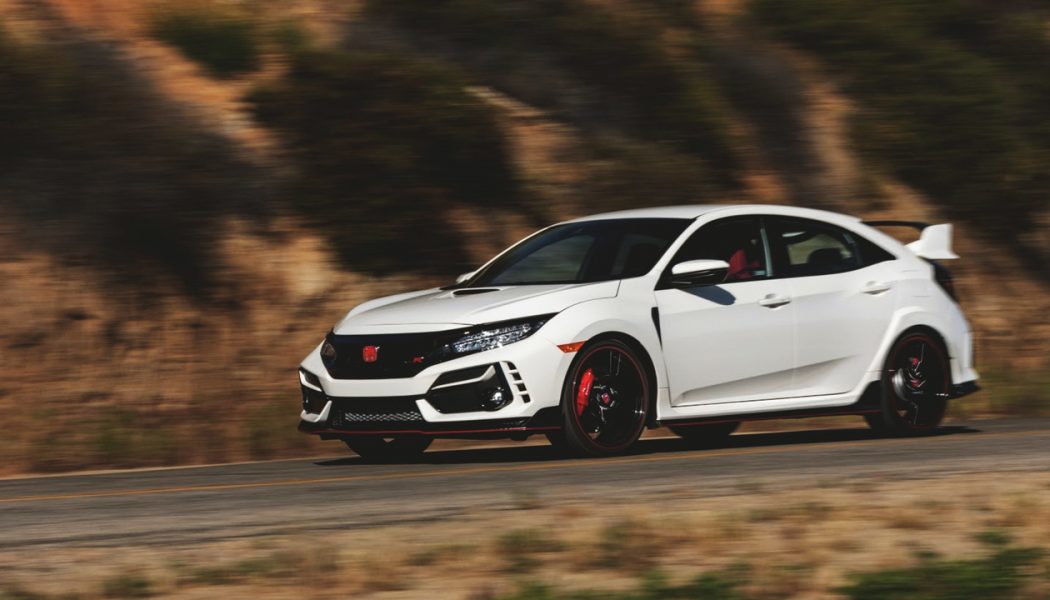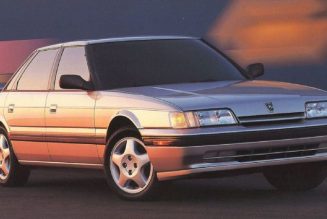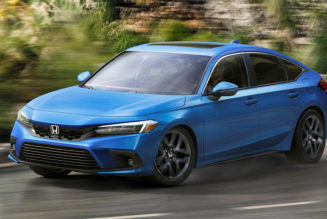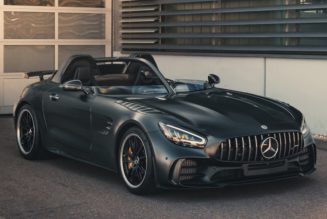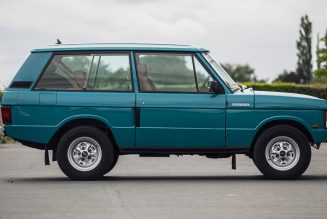In 1975 carmakers had a problem. Their products spewed too much noxious crud out of their tailpipes, and the EPA, by dint of the 1970 Muskie Bill—known as the Clean Air Act—said automakers had to clean up their act. Naturally, nearly every automaker cried foul, claiming that doing anything whatsoever to protect the environment or their customer base’s health would immediately bankrupt them and cost jobs. When no one listened to their sob story, they were forced en masse to innovate. Federal law mandated that unleaded fuel would be available at all gas stations on July 1, 1974, meaning that cars could be equipped with exhaust-scrubbing catalytic converters (lead poisons the catalysts inside the converters), allowing the 90 percent reduction in emissions the EPA regulated. People were frightened; carmakers were scrambling; and the cleaner, more fuel-efficient future seemed scary.
Crazy thing is, Honda started working on this problem back in 1966. Honda and Toyota—to which Honda had licensed technology—were the only automakers that said they could meet the seemingly very stringent 1975 standards. At that time, Honda engineers determined catalytic converters to be too fragile. Also, in the early ’70s, only two-way catalytic converters were available, and these didn’t scrub as many pollutants as the three-way type we use now. Honda also looked at alternatives to regular four-stroke, gasoline-powered engines, but, in the end, decided to stick with good old internal combustion. They’d just clean it up a bit with combustion-chamber technology.
Honda did such a good job that its Compound Vortex Controlled Combustion engine—CVCC for short—was the first to meet the U.S. 1975 emissions standards in December 1972. The engine needed no catalytic converter, and it could burn either leaded or unleaded fuel. Note I said a CVCC engine, and not a Honda Civic CVCC. The three cars Honda Motor Company shipped to Ann Arbor, Michigan, for EPA testing were actually Nissan Sunnys running transplanted motors. Honda simply didn’t have a car large enough to accommodate the 1488cc CVCC engine. Which is why when the Civic CVCC went on sale here in the States in 1975, it sported a 55mm-longer (just over 2 inches) hood and front fenders than the regular flavor Civic 1200, which had just debuted here in 1974.
Before we get to into the emissions-fighting CVCC, we should spend a moment discussing the first-generation Civic. It was the success of the early first-gen cars that helped the Civic become one of the world’s perennially best-selling models. Since the mid-1960s, Honda had been timidly tiptoeing into the car market with entries like the S500 roadster, S700 delivery van, and air-cooled (and frankly fascinating) 1300 Coupe. None of those was offered for sale in the States; the cute and tiny N600 and Z600 were the first Honda passenger cars sold in the U.S. Despite their charms, 10-foot-long vehicles powered by two-cylinder motorcycle engines held no fascination for Americans. Especially not before the oil crisis.
No, if Honda wanted to compete in the biggest car market on earth, it needed a credible player. Not only that, but when Honda engineers set about designing the first-generation Civic, it was made known to them that, if it wasn’t good enough, Honda would be pulling out of the car business altogether. Nothing like a little pressure!
Luckily, unlike Americans, Japanese consumers had long demanded high-quality small cars, so there were no obstacles placed in front of the Civic’s engineers. Well, none other than Soichiro Honda wanting the Civic to have a solid-beam-axle rear suspension. “I don’t see any merit in the independent suspension,” Honda’s founder famously told the Civic’s suspension engineer Mamoru Sakata. In the end, Sakata was so passionate about having rear struts that Soichiro relented, and the Civic would be fully independent.
Following the best packaging practices laid down by the MINI Cooper, the 1972 Civic featured a transverse-mounted front-engine, front-drive layout. Despite its compact size, the Civic didn’t feel cramped. Even the trunk was roomier than it looked from the outside, thanks in part to the elimination of the rear axle. Besides, there was always the wagon model if you needed even more space. More important for the times, the Civic got better than 40 mpg, and, best of all, they were fun to drive.
Civics of this vintage present the driver with certain cues of their age—incredibly thin, wooden steering wheel, delicate yet lanky shifter, very tight face-to-windshield ratio—but unlike a Volkswagen Beetle or a real Mini, there’s nothing primitive about how these Hondas go down the road. The five-speed transmission is fully synchromeshed and the four-wheel independent suspension makes the Civic not only feel sporty, but counteracts the short wheelbase’s (86.6 inches) natural tendency to bang and crash. The slightly longer wagon (89.9-inch wheelbase) has a smoother ride, but doesn’t drive quite as snappily. Are they underpowered? Sure, but the coupe’s 53 horses and 68 lb-ft of torque only have to lug around 1,500 or so pounds. Nearly 40 years later, the CVCC engine feels more than just adequate. Let’s call it peppy.
Oh, yes, what is CVCC? The big secret of the CVCC that allowed it to burn leaded gas without a catalytic converter and meet the tough 1975 emissions standards is in the cylinder head. There you will find two unusual things: a thimble-size extra combustion chamber and a tiny, fingernail-size valve. The diminutive valve allows in a very rich fuel/air mix, and the extra, miniature cylinder acts as a precombustion chamber—the spark plug sits right in it, and ignites the rich mixture. Meanwhile, back in the actual cylinder, a rather lean fuel/air mix is ignited by the rich mixture firing out of a flame-hole in the precombustion chamber. Elegantly, the CVCC’s carburetor is actually two carbs: one feeding a lean mix to the real cylinders and another feeding a much richer but smaller dose to the precombustion chambers. The technology is known as stratified-charge combustion, and it wasn’t invented by Honda. However, Honda was the first company to implement it on gasoline-powered passenger cars.
My father bought a yellow 1976 Honda Civic CVCC Hatchback for $3,469 from Al Piano Honda in Thousand Oaks, California, about a year after I was born. Everything came standard, including a five-speed manual, rack-and-pinion steering, cowl air scoop, and “deluxe vinyl interior.” It even offered an AM radio as a no-cost option. It was the first Japanese car he ever bought.
“Your dad just liked new technology,” my mother informed me when I asked her why he bought a Civic CVCC. “He seemed very excited about it. Also, we didn’t have a lot of money, but we were afraid of used cars. They weren’t as good as they are now.” In the days before cellphones, my parents were big CB users. New to California, my mom’s handle was “Bluebird” after her 1973 Buick Skylark, while my dad went with “Yellowbird” because of the Honda.
“We both worked and commuted, and I remember talking to each other all the time.” I’m not sure what happened to Bluebird, but I remember my family stuck with the Yellowbird handle long after the CVCC was gone. I remember using it on road trips in our 1979 Buick Electra Estate Wagon. My sister, Natalie, and I liked to harass truckers.
“I like that they wanted to have clean cars, that they wanted to sell cars in California,” says Ken Uk, owner of the 1975 Civic CVCC pictured here.
“No one considers Japanese cars classics,” interrupts Ken’s half-brother Scott Ngov, the owner of the white 1979 CVCC Wagon. “And if they do, they’re all Datsuns.”
Unlike me, neither Ken nor Scott had Hondas growing up in Southern California. “Our parents are Toyota people. They never let us have Hondas,” Scott explained.
“I always wanted a Prelude,” says Ken. Co-owners of a bakery, the two brothers got bitten by the Civic CVCC bug in a roundabout way. “I wanted a surf mobile,” says Scott. “But I wanted something different.”
Which is why, in 2007, he purchased a single-owner CVCC wagon for $1,900. “Everything except the paint is original, even the interior. Everything works, too. Even the clock!” Brother Ken liked the wagon’s “character,” so, a year later, he plunked down $1,300 for a much rougher yellow hatch. “It needed a new interior, paint, the engine needed to be rebuilt, all the trim was missing. It was pretty poor.”
For the next year, all their free time went to restoring the yellow car. “Our weekends were spent scavenging through junkyards,” Ken explains. “There’s no aftermarket support for first-generation Civics.”
Ken nods and continues, “But that makes finding parts that much more fulfilling. When you find them, it’s like treasure.”
Aside from the paint, they did the work themselves. “I liked coming home and getting stuck in the garage for hours,” Ken reminisces. “It’s about the love of the car,” Scott tells me. “Whatever you put into them, you’re not getting out. The guy that painted my car told me it wasn’t worth the money. I said to me, it’s worth it.”
There’s almost something uniquely Southern California about the two cars. “People flag us down, wave to us, honk at us, give us the thumbs-up. Everyone has a CVCC story. They either grew up with one or knew someone who did.”
Climbing into the yellow Civic, I realized I hadn’t been in a first-gen CVCC hatchback since the 1970s. I knew it wasn’t the same car my dad had—this one is a 1975 with just 53 horsepower. Dad’s car was the more potent 1976 with a mighty 60 hp, and if he had waited a few years he could have had a whopping 63 hp the 1978 to 1979 CVCCs put out. Regardless, I was hoping for a tingle, a something, a connection between my early childhood years and this car.
After all, you’re reading what I’m writing only because my dad forced me (thankfully) to love cars. Dad replaced the mechanically sound CVCC two years later with a 1978 Datsun 280Z 2+2. Explains my mother, “We had a little bit more money then, and with your sister being born, we needed a bigger car.” Makes sense, and some of my earlier memories are of being strapped into both my child seat and the front of that Z and bombing around the very same canyons MotorTrend uses today to evaluate cars.
But, alas, driving Ken’s car is all new territory to me. Perhaps I remember the checkerboard seats? Perhaps the blue instrument cluster? No, sad to say, no. From the outside, I see Yellowbird, but is that a real memory, or just a memory created by photographs?
Regardless, the little yellow guy delights me. It’s just a good little car. Not surprisingly, the white wagon feels much more familiar, as a dear friend drove one throughout college. While the wagon’s good, I much prefer how the little hatch drives. And I’m a wagon guy. So much so that I just e-mailed a guy about a 1976 CVCC he’s selling. A colleague recently told me that, not since the Model T, were customers offered as much high technology for such a low price. More important, as Ken and Scott repeated again and again, it’s the Civic CVCC’s character that first hooks you and eventually reels you in.
Specifications
Engine: 90.8-cu-in/1488cc SOHC I-4 1×3-bbl Keihin carburetor
Power and torque: 53 hp @ 5000 rpm, 68 lb-ft @ 3000 rpm (hatch); 63 hp @ 5000 rpm, 77 @ 3000 rpm (wgn)
Drivetrain: 5-speed manual, FWD
Brakes front: solid disc, rear: drum
Suspension: front: struts, coil springs, anti-roll bar; rear: struts, coil springs (hatch) solid axle, leaf springs (wgn)
Dimensions:
L: 150.0 in, W: 59.3 in, H: 52.2 (hatch); L: 160.0 in, W: 59.3 in, H: 54.3 in (wgn)
Weight: 1740 lb (hatch), 1985 lb (wgn)
Performance: 0-60 mph: 15.6 sec, quarter mile: 20.1 sec @ 68 mph, 60-0 mph: 127 ft (hatch, MT, February 1975); 0-60 mph: 15.5 sec, quarter mile: 20.1 sec @ 67 mph, 60-0 mph: 208 ft (wgn, MT, December, 1978)
Price new: $3009 (1975 hatch), $4759 (1979 wgn)
ASK THE MEN WHO OWN ONE
Brothers Ken Uk and Scott Ngov grew up in Southern California dreaming about Hondas. They co-own a bakery.
WHY I LIKE IT: “If I could use one word to describe the first-gen Civic, it would be character. From its simple design and clean lines to its narrow, easy-to-maneuver stature to its fuel efficiency, the first-generation Civic is nearly an ideal car. I discovered it wasn’t just an old Honda, but a forgotten piece of automotive history.”
WHY IT’S COLLECTIBLE: “Because they were viewed as economy cars, people typically discarded Civic CVCCs when they were done with them. If the word ‘collectible’ means giving value to something of a certain vintage that’s rare, these old Hondas are exactly that.”
RESTORING/MAINTAINING: There’s no aftermarket support, so Craigslist and junkyards are your best resources. The good news is that, when you do find them, parts are cheap.
BEWARE: Only the 1975 CVCCs are smog-exempt, and if the later cars aren’t in tune, they won’t pass.
EXPECT TO PAY: Concours-ready, $2,300; solid driver, $1,000; tired runner, $500
JOIN THE CLUB: The Honda Club (hondaclub.com), 1stgencivic.com, thisoldhonda.org, hondacivicwagon.com
OUR TAKE
THEN: “The CVCC is a perky car to drive. Not fast, not quick, but perky. It’s the sort of car that likes to be driven hard. The CVCC Civic is a car for tomorrow, but one that puts the fun back in driving.” –Bob Hall, Motor Trend, February 1975
NOW: The Civic CVCC is more than just a charming little car that drives better than most mid-1970s cars. Its combination of smart engineering and environmental concern laid the blueprint that made Honda one of the major players on the world automotive scene.
This article was originally published in January 2013 and has been updated for clarity.
